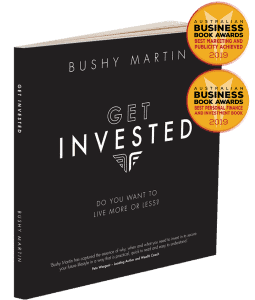Markets are rattled. Tweets are triggering sell-offs. And once again, Donald Trump is making global headlines — and market waves.
While the drama may feel distant from our shores, many Australians are wondering: Could this chaos really impact Australian property?Listen and subscribe via the Property Hub channel on Apple Podcasts, Spotify, Google Podcasts and YouTube, and read on below.
Let’s take a clear-headed look at what’s happening — and what it means for your investments.
Markets in Meltdown
Since the global share market highs in February 2025, Trump’s unpredictable trade moves have wiped up to $10 trillion off equity values worldwide.
Markets are swinging wildly, gripped by uncertainty. His “Liberation Day” tariffs — or “Liquidation Day,” as some are calling it — were worse than anticipated. Global retaliation is underway, and investors are spooked.
Here’s how the major markets have reacted:
- US shares down 19%
- Global shares down 17%
- Eurozone down 15%
- Australian shares down 14%
A bear market triggered by a tweetstorm?
It might sound absurd, but we’re living it — and the financial fallout is real.
What It Means for Australia
So, does Trump’s chaos mean we’re headed for recession? And will Aussie property prices take a hit?
Trump’s aggressive trade approach is disrupting long-held international ties. His tariffs effectively act as a tax on imports, which will drive up US prices and likely lead to short-term inflation — and possibly a US recession.
And as we know, when America sneezes, the world often catches a cold.
Where Australia Feels It Most
Only 5% of our exports go to the US, but that includes over 30% of our beef — so regional beef producers may feel the sting.
The bigger issue is China. Trump’s tariffs hit China hard, and since China buys 37% of all our exports — especially iron ore, coal, gold, and agriculture — a slowdown there could trickle down to us.
Still, exports make up only 26.8% of Australia’s GDP, far below the global average of 45%. That means we’re more insulated than most.
Recession Risk? Not Likely
According to AMP’s Shane Oliver, the chance of a US recession sits at 45%, while China’s growth might slow to 4%. Even with this, Australia is expected to see only a minor impact — a 0.2% direct hit and maybe 0.5% indirect drag.
Plus, the falling Aussie dollar helps absorb shocks, and more RBA rate cuts are now likely. That means cheaper money — and more accessible property finance.
What It All Means for Australian Property
Volatility = Opportunity
Every market downturn has historically led to a flight to safety. And in Australia, property is one of the most trusted safe havens.
We saw it post-GFC, post-pandemic, and during every global wobble. Australian property has proven remarkably resilient.
The Fundamentals Are Strong
We have a significant housing shortfall. Demand is climbing. Supply is shrinking. Labor’s National Housing Accord aimed to deliver 1.2 million homes by 2029 — but projections show we’ll fall 462,000 homes short.
Combine this with an existing undersupply of 165,000–400,000 homes, and it’s clear: demand is outpacing delivery.
Lower interest rates will further boost borrowing power — every 1% cut increases borrowing capacity by roughly $100k for the average buyer.
The Result?
More buyers. Fewer homes. Rising prices.
But Not Everywhere
Not all areas will benefit equally. Regions reliant on struggling sectors like mining or agriculture — such as parts of WA or far north QLD — could see demand soften due to weaker employment and incomes.
Because growth follows jobs. Look for locations with strong, growing industries and long-term employment stability.
Where Should Investors Focus?
Look for signs of the 3 I’s of Future Growth:
- Infrastructure: Major new investments in transport, health, education, etc.
- Industry: Thriving, diverse economic sectors and job growth
- Incomes: Rising wages and steady employment
Right now, smart investors are keeping their eyes on:
- Southeast Queensland
- Regional hubs in Victoria and NSW
The key is to start with your affordable price range for a 3–4 bed home, and work backward into the right location — not the other way around.
Bottom Line
- Trump’s chaos may rattle markets, but Australia is positioned to ride out the storm
- Lower interest rates and under-supplied housing are set to drive Australian property demand
- Focus on long-term fundamentals and choose locations with strong employment and infrastructure growth
As Warren Buffett famously said: “Be fearful when others are greedy, and greedy when others are fearful.”
Fear is high. Opportunity is knocking.
Need a Hand Navigating It?
If you’re wondering how this impacts your personal strategy, book a Strategy Session or speak with the team at KnowHow Property Finance.
We’ll help you make informed, confident choices your future self will thank you for.
If you found this helpful, share it with your friends — and subscribe for more clear, objective insights into the world of Australian property.
Until next time — stay smart, stay strategic, and get invested.




